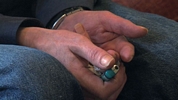|
|
 Acne (1,500) Acne (1,500)
 Addictions (1,500) Addictions (1,500)
 Advice (1,500) Advice (1,500)
 Allergies (1,092) Allergies (1,092)
 Alternative Medicine (1,500) Alternative Medicine (1,500)
 Anti Aging (1,500) Anti Aging (1,500)
 Breakup (1,500) Breakup (1,500)
 Cancer (1,499) Cancer (1,499)
 Dental Care (1,500) Dental Care (1,500)
 Disabilities (1,500) Disabilities (1,500)
 Divorce (1,500) Divorce (1,500)
 Elderly Care (1,498) Elderly Care (1,498)
 Goal Setting (1,500) Goal Setting (1,500)
 Hair Loss (1,500) Hair Loss (1,500)
 Health and Safety (1,497) Health and Safety (1,497)
 Hearing (1,500) Hearing (1,500)
 Law of Attraction (1,499) Law of Attraction (1,499)
 Marriage (1,500) Marriage (1,500)
 Medicine (1,497) Medicine (1,497)
 Meditation (1,499) Meditation (1,499)
 Men's Health (1,500) Men's Health (1,500)
 Mental Health (1,500) Mental Health (1,500)
 Motivational (1,500) Motivational (1,500)
 Nutrition (1,495) Nutrition (1,495)
 Personal Injury (1,499) Personal Injury (1,499)
 Plastic Surgeries (1,500) Plastic Surgeries (1,500)
 Pregnancy (1,496) Pregnancy (1,496)
 Psychology (1,500) Psychology (1,500)
 Public Speaking (1,500) Public Speaking (1,500)
 Quit Smoking (1,500) Quit Smoking (1,500)
 Religion (1,499) Religion (1,499)
 Self Help (1,500) Self Help (1,500)
 Skin Care (1,500) Skin Care (1,500)
 Sleep (1,500) Sleep (1,500)
 Stress Management (1,500) Stress Management (1,500)
 Teenagers (1,492) Teenagers (1,492)
 Time Management (1,500) Time Management (1,500)
 Weddings (1,500) Weddings (1,500)
 Wellness (1,500) Wellness (1,500)
 Women's Health (1,500) Women's Health (1,500)
 Women's Issues (1,500) Women's Issues (1,500)
|
Lyme disease (LD) is a multi-system bacterial infection caused by a the spirochete Borrelia burgdoferi (Bb). The pathogen was named in honor of the discoverer and a founding board member of the Lyme Disease Foundation, Willy Burgdorfer, PhD, MD (hon).
The investigators discovered that most of the affected children lived near wooded areas likely to harbor ticks. They also found that the children's first symptoms typically started in the summer months coinciding with the height of the tick season.
Ecology of Lyme Disease
LD is transmitted to humans by ticks. Larval and nymphal stages feed on infected reservoir hosts, acquire the organism and then, after moulting to the next life stage (nymphs and adults respectively), pass on the infection to humans and other animals. In the northern hemisphere, small placental mammals are reservoir hosts.
Causes of Lyme Disease
B. burgdorferi bacteria cause Lyme disease. The bacteria have a complex life cycle, spending part of their life in the deer tick and part in some mammals such as mice and deer.
Location - Some states have a higher incidence of Lyme disease than others. The 10 states that have the most reported cases of Lyme Disease yearly include New York, New Jersey, Connecticut, Pennsylvania, Wisconsin, Minnesota, Maryland, Delaware, New Hampshire, and Maine. Increased risk in these areas can be attributed to a greater amount of wooded areas and a larger quantity of deer.
Symptoms of Lyme Disease
Migratory joint pain. If the infection is not treated, you may develop bouts of severe joint pain and swelling several weeks to months after you're infected. Your knees are especially likely to be affected, but the pain can shift from one joint to another.
Symptoms of Lyme disease are diverse and often occur in early and late phases. They vary widely from person to person. Any one symptom may fail to appear, and symptoms may overlap in various combinations. Death from Lyme disease is very rare and occurs only in a few cases in which the heart is severely affected.
How is Lyme disease treated
Lyme disease is treated with antibiotics. Early-stage Lyme disease responds very well to treatment. In most cases, 14 to 30 days of treatment with an antibiotic kills the bacteria. Your doctor will tell you how many days to take the antibiotic. It's important for you to take all the medicine your doctor prescribes to prevent the spread of Lyme disease to your joints, nervous system or heart.
Intravenous antibiotics
If the disease has progressed, your doctor may recommend treatment with an intravenous antibiotic for 14 to 28 days. This is effective in eliminating infection, although it may take some time to recover symptomatically. Intravenous antibiotics can cause various side effects, including a lower white blood cell count, gallstones and mild to severe diarrhea.
|
|
|



